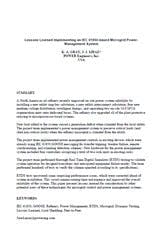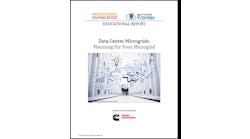What’s the best way to avoid performance issues – and associated expenses – during a microgrid system installation? Uncover and correct them ahead of time. A North American oil refinery microgrid did just that by investing in thorough Real Time Digital Simulator (RTDS) testing of its power management system.
The oil refinery had installed new substations and upgraded equipment to improve its on-site power system reliability; however, new load added to the system caused a generation deficit when in island mode from the local utility. To preserve critical loads (and shed non-critical ones), the project team implemented a power management system.
Hundreds of tests were performed to validate system operation for designed transitions and anticipated failure modes, uncovering potential issues that were corrected before installation.
Vendor support, peer reviews, and additional regression testing all become more feasible and effective, giving the engineer and the plant owners and operators greater confidence in the installed system
This white paper details six lessons learned from these tests.
Download from the Microgrid Knowledge White Paper Library
Lesson 1: Accurately characterize the system. To prove that a power management system could detect contingencies and shed load quickly enough to preserve stable operation, we first developed a software electrical model of the system in a popular phasor-domain power system modeling package. It identified that the refinery generators would become unstable, or trip offline for self-preservation, after as little as 30 cycles from certain initiating events. Without these dynamic model validation tests at the beginning of the project, system definition would have needed to depend on typical values for similarly sized machines, reducing confidence in both the performance definition and RTDS testing results. Read more.
The value of the refinery process made it worthwhile to invest in RTDS testing and to confirm that this oil refinery microgrid could continue stable operation when an islanding contingency occurs.
Download the whitepaper to read more on discovered issues, solutions and lessons learned.







